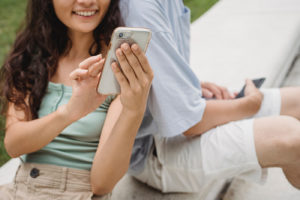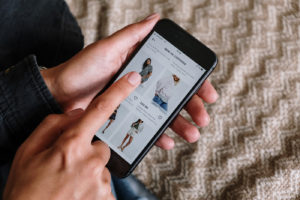The customer lifecycle describes how prospects journey through their relationship with your brand. It starts when consumers become aware of your products or services and ends with them standing by you as a loyal customer.
Lifecycle marketing or customer journey has commonalities with the traditional sales funnel. But as opposed to looking at the sales process, the customer lifecycle focuses on the end-to-end experience someone has as they fulfill their transaction.
Moreover, the sales funnel guides marketing goals and future campaigns, while lifecycle marketing is better suited for improving customer service and enhancing customer loyalty.
There is no better strategy between the two models. In fact, they’re used hand-in-hand in building a successful empire.
In this blog, we’ll define each stage of the customer lifecycle and give quick tips on how you can maximize results.
1. Reach
The beginning of the customer lifecycle is the first time they come across your brand and learn about your products or services. At this point, consumers are researching possible solutions to their problems.
They’ll be scouring through customer reviews, social media, and google search results to see which brand fits their needs. Your job is to raise your visibility and leave a good impression through value-adding content.

Make sure that you stay on your customers’ radar through ads, social media posts, and blog posts. Refine your SEO strategy and keep your content coming.
You’d know when you’re doing a good job when customers contact you, eager to get know more about your offer and get a quotation.
How to maximize reach:
- Create detailed buyer personas
- Optimize your SEO strategy
- Invest in paid ads
- Produce and share relevant content
- Implement omnichannel marketing
2. Acquisition
The acquisition stage is marked by the tail-end of the previous phase where consumers initiate a conversation to learn more about your products and services. Depending on the channel they use, you’d need to employ different approaches.
Over the phone, you must probe the concerns of your prospects, respond to their questions, and get as much information as you can. The setting is perfect to portray a warm persona and build a deep relationship with your consumers.
Emailing is more common in the digital marketplace. Conversations tend to get more formal in emails but that doesn’t mean you should forgo personalization. If you do it right, you can get consumers to warm up and subscribe to your email list.
On your website, provide multiple means to contact you and enable a chatbot or live chat to answer urgent questions.
How to maximize acquisition:
- Use a CMS
- Create an FAQs page
- Publish value-adding blogs
- Offer free trials or tutorials
- Hold one-on-one demos (if possible)
3. Conversion
Now comes the exciting part. Your prospects are closer to making a decision, and if you’ve made them feel valued and welcomed, they will turn into a paying customer.
Approaching leads with a hard sell isn’t advisable. Instead, nurturing customer relationships through meaningful engagements allow the conversion to happen naturally.
Apart from ensuring the quality of your products, you must invest in creating memorable customer experiences. Eliminate as many obstacles as you can for your consumers and personalize interactions to set you apart from other brands.

How to maximize conversion:
- Make custom landing pages
- Simplify your checkout page
- Optimize your web forms
- Recommend products based on web activity
- Add social proof
4. Retention
As soon as you’ve made a sale, you need to put in the work for customer retention. A simple thank you message followed by a customer satisfaction survey lets consumers know that you care about them.
Go through their responses and learn from them. Discover what you can do better and put those insights into action. It could mean tweaking your website, improving customer service, or making changes to your products.
Do your best to offer 24/7 support and be transparent about your policies on returns or refunds.
Long-time customers and consumers who’ve made bulk purchases appreciate exclusive perks and privileges. Discounts, freebies, and virtual badges are some of the gifts you can offer.
Most importantly, re-engage with your customers through email marketing and push notifications. Make custom product recommendations and suggest internal blog posts that are relevant to their interests.
How to maximize retention:
- Use customer accounts
- Send re-engagement emails
- Provide customer support post-purchase
- Create a rewards system
- Extend proactive customer service
5. Loyalty
Loyalty is the stage where customers bring prospects your way. They do this by sharing their experience on social media, writing product reviews, and referring their friends to your store.

A loyal community of customers secures your brand’s future as businesses pop up with similar offers. Their history with your brand is a big factor that comes into play when they’re weighing their options.
That’s why it’s crucial to put your best foot forward each time you interact with a customer. You need a strong foundation of trust that’s worked on consistently over time.
How to maximize loyalty:
- Incentivize referrals
- Encourage customer reviews
- Respond to inquiries promptly
- Build a community with your customers
- Present your products as unique value propositions
Optimize Your Customer Lifecycle with DevWerkz
Get the most out of your marketing campaigns with the best lead generation team. We’ll help you attract high-quality leads and convert consumers with data-driven techniques. Contact DevWerkz today.